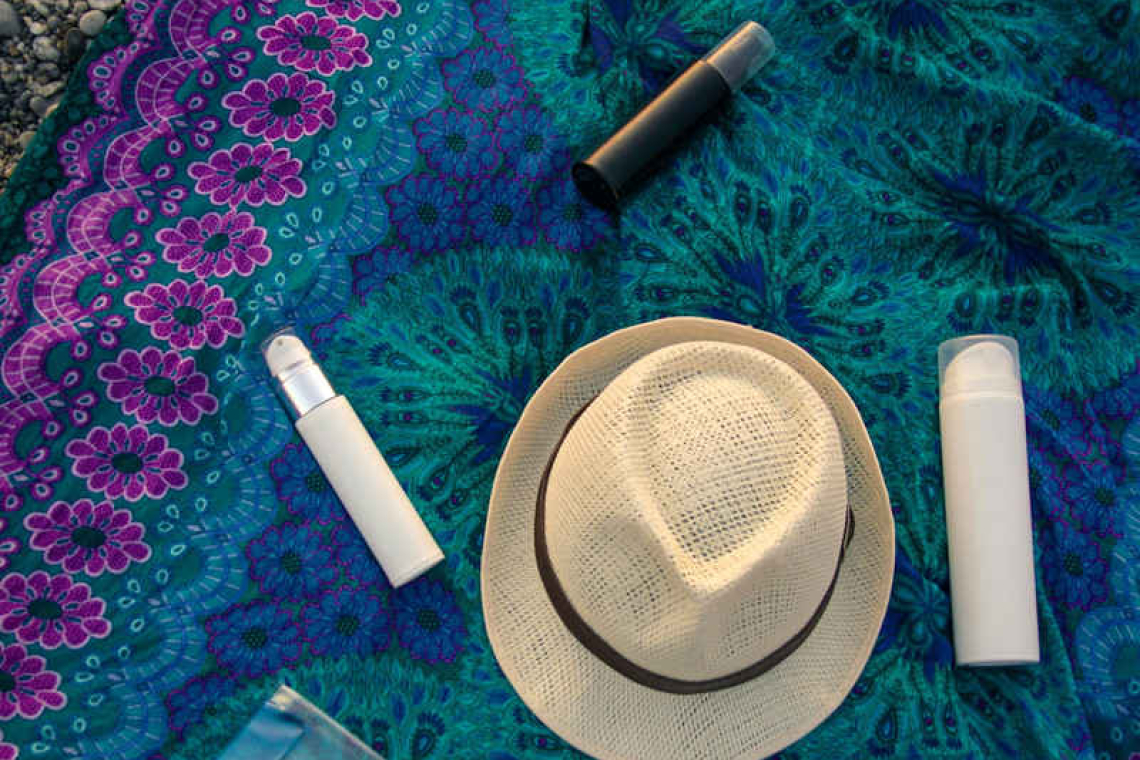By Dr. Colin Michie FRCPCH University of Central Lancashire.
Our world is bathed daily in ultraviolet rays from the sun. Living organisms have evolved protections to block these powerful energies. Melanin is our front ranking protective molecule, working along with metabolic processes to heal sunshine damage. So on exposure to sun, we all make more melanin. We need to use other barriers, too, if we are to also effectively protect our skin against ageing and cancer. Perhaps as many as four out of five skin cancers are potentially preventable if sunshine exposure is reduced or blocked.
Sun blocks may appear unnecessary – for some, a tan seems beneficial. However, rising death rates from cutaneous melanoma – a cancer linked directly to sun exposure – means this particularly invasive malignancy needs consideration by all ethnic and all age groups, whatever our skin tone. It is not just sports teams, or those with employment outdoors; almost all of us accumulate excessive sun exposure. Philipsburg receives over 3,000 hours of sunshine annually and because of its position near the equator, sunshine there has a higher ultraviolet component than, for instance, Miami.
Canadian figures recently linked sunny periods of weather with increased rates of melanoma – this relationship is clear. But it is not only melanoma. Many dermal conditions ranging from sunburn to sun spots, wrinkles, keratoses and squamous cell carcinomas are linked to exposure to the sun. Skin damage from sun exposure is not always visible either. Sun exposure damages the skin immune system and may be associated with drug reactions and sensitivity.
Does protection against sunshine work? Encouraging Swedish reviews suggest that rates of melanoma are falling in their younger folk, probably in response to public health campaigns and greater use of sun protection. This battle can be won!
Sun protection needs to start with avoidance. If venturing outdoors, wear a wide-brimmed hat and long-sleeved clothing. Hat-wearing is a matter of fashion, but a really valuable trend for skin and eye health. Clothing with ultraviolet shielding or denser weaves of darker and brighter colours are particularly protective.
Topical sun-blocking agents reduce common skin cancers and tissue damage. There is no evidence they cause cancer in users. For this reason, dermatologists recommend their regular use for all skin types. Patients taking medications that sensitise them to sunshine, such as following transplants, use these products to good effect. It has been found, though, that even such patients require regular reminding on all possible occasions to use their sun protection! It is an aspect of our grooming we readily neglect.
Sun-blocking products often contain particles of zinc or titanium. These metallic reflectors have been reformulated or micronized recently into tiny, coated, nanoparticles. This allows them to provide more effective protection, without creating a white or greasy layer. Both are frequently used together so as to block the full range of damaging ultraviolet rays. They are safe to users in swimming pools; in a water-resistant formulation, they maintain their barrier after several swims.
Chemical blockers are commonly used, too, in protective products to filter out ultraviolet light. They include compounds such as avobenzone, aminobenzoic acid, oxybenzone and octocrylene. Local authorities in different countries have banned various groups of these agents because they are considered to pose a risk to the health of coral reefs and marine ecosystems. So please check the labels of your protection!
Rapid advances and changes to sun blocking technologies are developing as manufacturers copy the protections used by plants against sunshine damage. It would make medical sense, for instance, to protect the skin against more than just ultraviolet light. Such enhancements could reduce the immunological damage resulting from sun exposure. It would be valuable to add agents to improve the skin’s ability to heal from oxidation, for instance – a damaging effect of sunshine. New agents such as the mineral mica, or iron pigments, have been found to function as barriers, strengthening the functions of sun blocking preparations. Many novel products are likely to arrive soon!
A crucial challenge to the effective use of sun blocks is we, the users. Few of us use sun creams as they should. Adult men are the least likely to apply products to their skin. When using products, we use too little of them, missing some areas of our skin and rarely using it often enough! An average male in a swimming costume requires approximately six teaspoons of a preferably SPF50 sun block to cover his exposed skin for each treatment. The average face requires between a quarter and a third of a teaspoon of product: Do you use as much?
Daily care of our skin, our largest organ, is valuable for many reasons. Wearing a hat and using safe sun protection methods should become a habit, a ritual for all of us, starting from childhood.
Useful resource:
https://www.who.int/news-room/fact-sheets/detail/ultraviolet-radiation
Dr. Colin Michie is currently the Associate Dean for Research and Knowledge Exchange at the School of Medicine in the University of Central Lancashire. He specializes in paediatrics, nutrition, and immunology. Michie has worked in the UK, southern Africa and Gaza as a paediatrician and educator and was the associate Academic Dean for the American University of the Caribbean Medical School in St. Maarten a few years ago.







